
Armor-piercing ammunition (AP) is a type of projectile designed to penetrate either body armor or vehicle armor.
A bunker buster is a type of munition that is designed to penetrate hardened targets or targets buried deep underground, such as military bunkers.

A shell is a projectile whose payload contains an explosive, incendiary, or other chemical filling. Originally it was called a bombshell, but "shell" has come to be unambiguous in a military context. Modern usage sometimes includes large solid kinetic projectiles that is properly termed shot. Solid shot may contain a pyrotechnic compound if a tracer or spotting charge is used.

The Disney bomb, also known as the Disney Swish, officially the 4500 lb Concrete Piercing/Rocket Assisted bomb was a rocket-assisted bunker buster bomb developed during the Second World War by the British Royal Navy to penetrate hardened concrete targets, such as submarine pens, which could resist conventional free-fall bombs.

The SC 50 or cylindrical explosive bomb in English was a family of general-purpose bombs used by the Luftwaffe during World War II.
During the Second World War, the Luftwaffe developed a series of unguided rocket-propelled armor-piercing bombs. The three main types were the PC 500 Rs, PC 1000 Rs, and PC 1800 Rs. PC from Panzersprengbombe Cylindrisch the number from the approximate weight of the bomb in kilograms, and Rs meaning rocket propelled. These bombs were intended to be used against armored ships or similar targets. The purpose of the rocket propulsion was to increase the terminal velocity of the bomb and aid penetration.

The SC 500 or cylindrical explosive bomb in English was a family of general-purpose bombs used by the Luftwaffe during World War II.
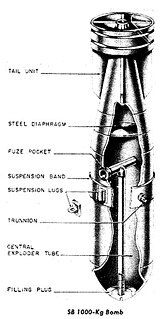
The SB 1000 (Spezialbombe) was a luftmine used by the German Luftwaffe during World War II.

The SB 2500 (Spezialbombe) was a luftmine or aerial mine in English used by the Luftwaffe during World War II.

The SD 50 or thick walled explosive bomb in English was a fragmentation bomb used by the Luftwaffe during World War II.
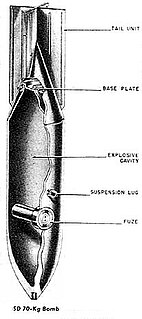
The SD 70 or thick walled explosive bomb in English was a fragmentation bomb used by the Luftwaffe during World War II.
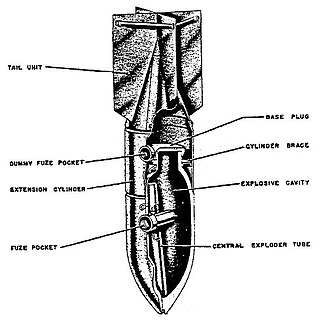
The SD 250 or thick walled explosive bomb in English was a fragmentation bomb used by the Luftwaffe during World War II.
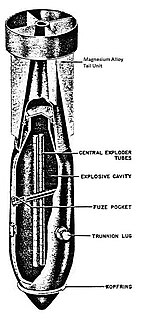
The SD 1700 or thick walled explosive bomb in English was a fragmentation bomb used by the Luftwaffe during World War II.

The PD 500 or thick walled armor-piercing explosive bomb in English was an armor-piercing bomb used by the Luftwaffe during World War II.

The PC 500 or cylindrical armor-piercing explosive bomb in English was a series of armor-piercing bombs used by the Luftwaffe during World War II.
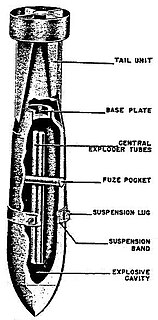
The PC 1400 or cylindrical armor-piercing explosive bomb in English was an armor-piercing bomb used by the Luftwaffe during World War II.

The PC 1600 or cylindrical armor-piercing explosive bomb in English was an armor-piercing bomb used by the Luftwaffe during World War II.

The SD 15 or thick walled explosive bomb in English was a fragmentation bomb used by the Luftwaffe during World War II.

The SBe 250 or concrete fragmentation in English was a fragmentation bomb used by the Luftwaffe during World War II.
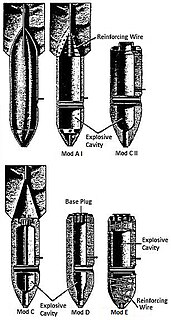
The SBe 50 or concrete fragmentation in English was a family of fragmentation bombs used by the Luftwaffe during World War II.


















